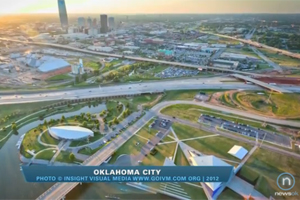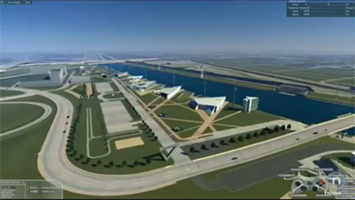 Steve Lackmeyer writing for the Oklahoman reports that in just a few short years, a series of improvements along the Oklahoma River in Oklahoma City have transformed the one time flood control channel into one of Oklahoma City’s top attractions. Tulsa’s natural Arkansas River continues to be abused and ignored. This story is much more about Oklahoma City’s success.
Steve Lackmeyer writing for the Oklahoman reports that in just a few short years, a series of improvements along the Oklahoma River in Oklahoma City have transformed the one time flood control channel into one of Oklahoma City’s top attractions. Tulsa’s natural Arkansas River continues to be abused and ignored. This story is much more about Oklahoma City’s success.
Lackmeyer writes:
It’s more a happy accident of design rather than intentional civic promotion that has thousands of cross-country travelers wondering about the “amusement park” they see rising up along the Oklahoma River.
The sight of dozens of kids crawling all over the 80-foot-high SandRidge Sky Trail alone is proving to be a draw for some of the 111,500 motorists who travel the new highway daily. Mike Knopp, director of the Oklahoma Boathouse Foundation, can only imagine what the response might be once the master plan for the area is fully realized over the next few years.
“People see the Sky Trail, and they come here thinking it is an amusement park,” Knopp said. “And in some ways, you can say it is. We like to call it an adventure park.”
 The draw of just the Sky Trail alone — a structure that includes an elaborate ropes course, the largest in America, the country’s largest slide (80 feet), the 80-foot “Rumble” bungee jump and zip lines that soon will glide across the river, already is drawing families and groups driving from Dallas, Amarillo and Wichita who are traveling to Oklahoma City.
The draw of just the Sky Trail alone — a structure that includes an elaborate ropes course, the largest in America, the country’s largest slide (80 feet), the 80-foot “Rumble” bungee jump and zip lines that soon will glide across the river, already is drawing families and groups driving from Dallas, Amarillo and Wichita who are traveling to Oklahoma City.
Their draw, Knopp says proudly, is the growing number of Riversport Adventures, including the Sky Trail, opening along the river.
The same draw is making the river a destination for locals as well.
Click here for more with video interviews and project files.
A film written, produced and narrated by this author for Tulsa County’s Vision 2025 documents what officials continue to struggle to accomplish in Tulsa.
Produced in 2010, the film details environmental challenges facing the Arkansas River in Tulsa County. More recently, Federal officials say $50 million authorized as a part of the 2007 Water Resources Development Act, will not be forthcoming. Local officials continue to struggle to find funding, but are now addressing the hazards and problems with the 30 year old existing “Zink Dam.” The Arkansas River Corridor Master Plan and subsequent studies recommend two new additional low water dams, but at this time no funding sources have been identified. As a result, the environment continues to degrade. The “wild prairie river” in Tulsa County is gone and destruction continues to travel south from the Keystone Dam.
